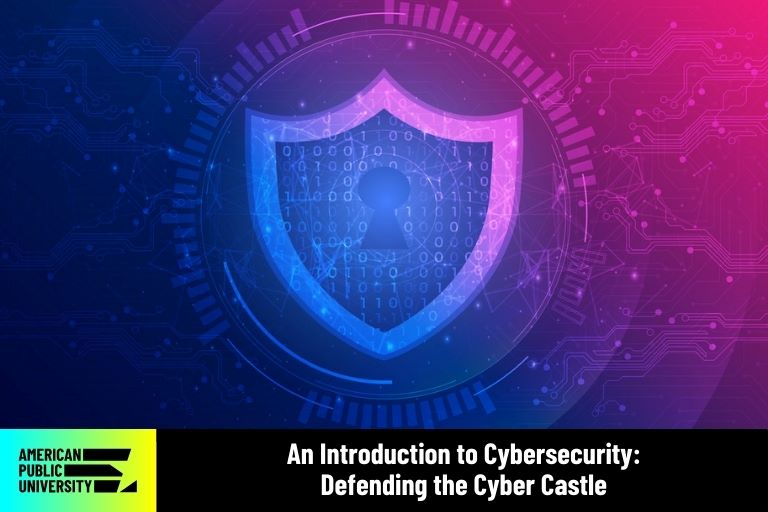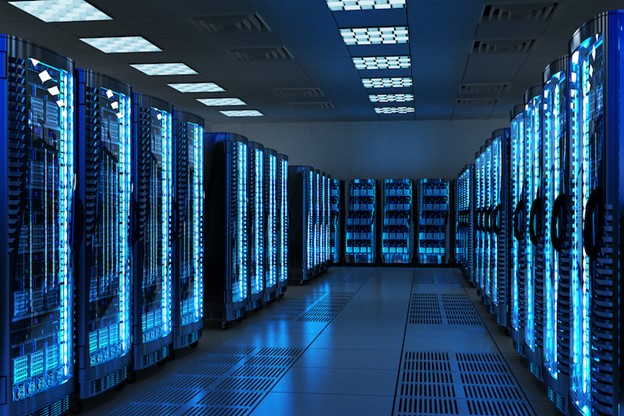By Dr. Andre Slonopas | 10/03/2023

I received my introduction to cybersecurity and technology early in my career. At my first position at a well-respected government agency responsible for mitigating network attacks, cybersecurity was the backbone of all of our operations. I saw the complex relationship between computer systems, cyber threats, security for networks, online attacks, vulnerabilities, best practices, and devices.
After hours of securing computers and networks and studying complicated operating systems, our group of professionals unexpectedly discovered a major weakness one afternoon. It was a time bomb that posed significant risks to technologies, systems, and software far beyond government organizations.
I still remember the adrenaline thrill. My rudimentary understanding of cybersecurity allowed me to understand the cyber hazards that vulnerability presented to our system and the need to better secure computer systems.
Risk management experts from different divisions also offered their services. While I could only offer only basic knowledge to the cybersecurity team, this was my introduction to the world of ethical hacking.
These people who were skilled in ethical hacking kicked into overdrive with their skills. They leveraged their extensive training, staged cyber assaults to test our firewalls and intrusion prevention systems, and created an environment that saved our organization in the end.
The actual wake-up call was an open conversation about prior data breaches, bad business practices, the emergence of common threats, the exposure of vulnerabilities, and the world of nefarious cyber actors always trying to find vulnerabilities. We studied security policies and proactive versus reactive security. My introduction to cybersecurity then went from mere theory to active practice.
A coworker who was a cryptography expert enthusiastically taught me about some of the best cybersecurity practices and security fundamentals. He advised me on basic cryptography, information protection, encryption, and the Triple DES (Data Encryption Standard) symmetric-key block cipher.
Protecting our organization was a team effort. None of the users were always safe, all networks were at risk, and security could only be achieved in businesses where everyone from beginners to experts contributed to the defense.
The Basics of Cybersecurity, Firewalls, and Encryptions
One way to think about an organization’s cybersecurity is to use the analogy of a castle under siege. To guard an organization or “digital castle,” cyber defenders work to prevent intruders from gaining access through cyberattacks and other internet assaults.
A firewall – the outer walls of that imaginary castle – is the first line of protection that cybersecurity specialists use to defend organizations against cyber attacks. They keep different types of threats out of digital networks and monitor data that enters and leaves businesses to defend them against infections by viruses and other forms of cyber attacks.
Walls, however, are passive, and there is always a risk that an attacker will find a way past a firewall. Encryption – the castle’s “moat” – serves as a second layer of cybersecurity.
Encryption scrambles business and technology information using advanced cryptography, which makes that information illegible without a key and provides a layer of defense to any persistent threat. If attackers do obtain access, organizational information can still remain a mystery through encryption.
As someone with a background in information security, I've seen many people dedicate their entire career to these defensive measures. They undergo extensive training and expand their knowledge and skills.
Numerous courses for students and working professionals cover the principles and processes that enable these defenses to be implemented and to secure business operations. Ethical hackers mimic attackers’ methods to identify flaws in security and create protective measures from the inevitable attacks.
In our fast-changing online environment where new cybersecurity dangers develop constantly, firewalls and encryption are essential. It shows how hard people and organizations work to preserve their digital “castles” and stay in compliance with digital norms.
Network Security, Intrusion Detection, and Prevention Systems
Network security serves as the “watchtowers” of businesses, and it has grown rapidly since my introduction to cybersecurity. Network security is provided by a sophisticated digital intrusion detection and prevention system (IDPS).
Modern cybersecurity employees serve as “watchtower sentries.” They complete cyber defenses with active measures and monitor network traffic to protect computer and internet systems.
Digital defenders like an IDPS are routinely praised in my cybersecurity classes. An IDPS provides a unique service; it identifies irregularities and possible dangers like malware.
Advanced IDPS systems can spot suspicious trends on the internet, offer early warnings of trouble, and alert business systems. These technologies significantly reduce risks, neutralize attacks, and offer greater security to our digital vulnerabilities.
As the internet and company compliance demands increase global connectivity, network attacks have increased. Providing cybersecurity now requires that attentive businesses adapt their systems to combat cyber enemies' new techniques and tactics and stay up to date with the ever-changing cybersecurity field.
Students and professionals who are interested in networking and cybersecurity must learn IDPS concepts and techniques. They must be able to provide protection in a turbulent cyberspace that extends across the internet and around the world so that critical information is secure.
Risk Management and Antivirus and Anti-Malware Tools
As I further immersed myself in the realm of cybersecurity, I came to the realization that our digital defenses are perpetually subjected to relentless attacks and risk management needs to be considered. Software such as antivirus and anti-malware solutions is similar to the “archers” that protect a castle from invasion. These software tools ensure business security by identifying, discouraging, and eliminating attackers that attempt to breach any digital system.
The significance of these technologies cannot be overemphasized. Similar to skilled archers who remain always vigilant, the real-time cybersecurity provided by these programs functions without interruption.
These programs also guarantee that any new data or code sent into a system undergoes instant scanning and assessment for possible hazards. This attentiveness serves as the first barrier of protection against unpredictable and hazardous attackers in the cyber world.
Planned security scans guarantee the detection and elimination of even the most inconspicuous attacks. While real-time protection provides rapid defense, periodic scans give a more thorough examination, assuring complete security for all aspects of the system.
Ideally, people interested in cybersecurity must possess a comprehensive understanding of networking security principles, concepts, and procedures, as well as gain the skills to implement and maintain cybersecurity measures. The interdependence of real-time and planned protection measures plays a crucial role in mitigating risk and ensuring the security of enterprises in a time when cyber attacks are pervasive.
Guarding Sensitive and Critical Information
If you envision an organization’s security as a medieval castle, protecting critical information is like protecting the king of that castle. This data, vital to an organization's operation, needs gates, guards, and walls. As long as that critical information is protected by good security, the organization will continue to function properly.
Risk to organization cybersecurity include malicious software, hackers, and unexpected flaws in security. Complex measures and skills are needed to protect sensitive information.
Virtual Private Networks (VPNs) leverage cryptography as a security measure for information as it travels the internet. VPNs protects critical information from interception as it is in transit from one location to another.
Finally, isolated servers serve as an inner sanctuary. These separate servers protect the organization's data if all other exterior protections fail. In the continuous pursuit of cybersecurity, it is necessary to appreciate the most valuable assets and protect them with unmatched defensive measures.

Isolated servers are another line of security defense against external or internal attackers.
Social Engineering and Insider Threats
History shows us that even the strongest castles with high walls and extensive moats were subject to internal treachery; espionage and double agents can fell empires as much as armies. Social engineers are the cyberspace version of treacherous attackers.
Social engineering exploits the weakest point in security: humans. A human’s casual click on a phishing email or an uninformed employee disclosing private information may bring down even the strongest cybersecurity system. These assaults rely on abusing trust, manipulating emotions, using a victim’s ignorance, or other methods of fooling experts or non-experts.
Modern espionage techniques, like phishing attempts, steal sensitive data or deliver dangerous payloads without detection. Disgruntled or hostile company employees may also become an insider threat.
To mitigate these weaknesses, training in cybersecurity basics and raising general awareness of security threats are essential. Businesses and federal, state, and local governments must frequently perform cybersecurity awareness seminars to educate workers to notice and react to every dangerous threat. Creating a human firewall requires simulated phishing exercises, password workshops, and awareness of data value. Ultimately, education and awareness are the keys to preventing data espionage, treachery, and security breaches.
The Ever-Evolving Landscape of Cybersecurity
Cybersecurity is a dynamic, fast-growing field where attacks and defenses are constantly evolving. Cyber attackers regularly develop new attack techniques, and potential victims must adapt their defenses to fight attacks and maintain their security.
In this quickly changing climate, institutions like American Public University are increasingly important. Our cybersecurity department is leading the cybersecurity education effort to train the next generation of experts on current threats, defensive mechanisms, and future problems through programs such as our bachelor’s online cybersecurity degree.
We are developing flexible and adaptive academic programs through the use of demanding courses, hands-on training, and real-world simulations. We also stress the necessity of being proactive, developing defenses, and cultivating attentiveness.
Cyber problems will continue to evolve in the future. But with devoted institutions and a constant effort to close the cybersecurity knowledge gap, we can make our cyber defenses impregnable to any challenge. The cybersecurity community, led by pioneers like APU, will ensure that our digital worlds are protected from both existing and emerging security threats.
Related Articles:
- What Is Cybersecurity? The Realities of the Digital Age
- Choosing a Cybersecurity Program: 7 Things to Consider
CISM is an Information Systems Audit and Control Association, Inc. registered trademark.
